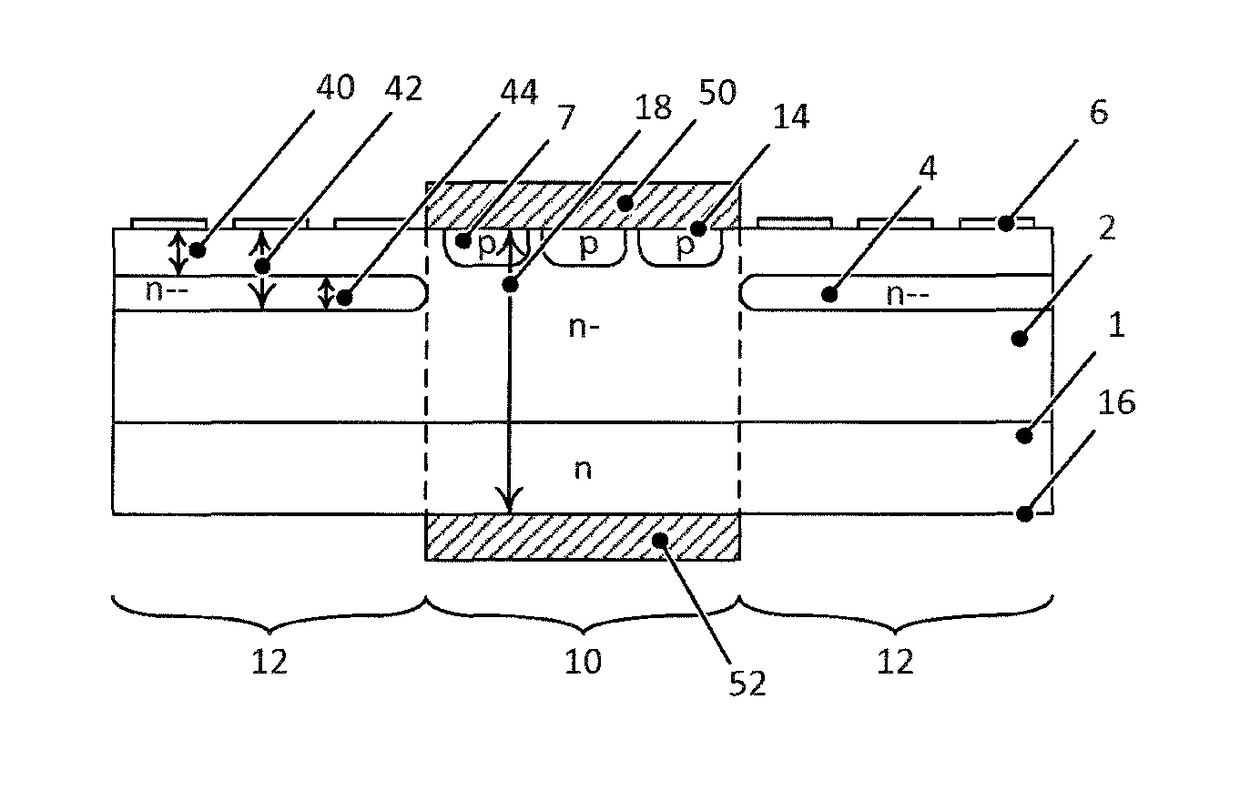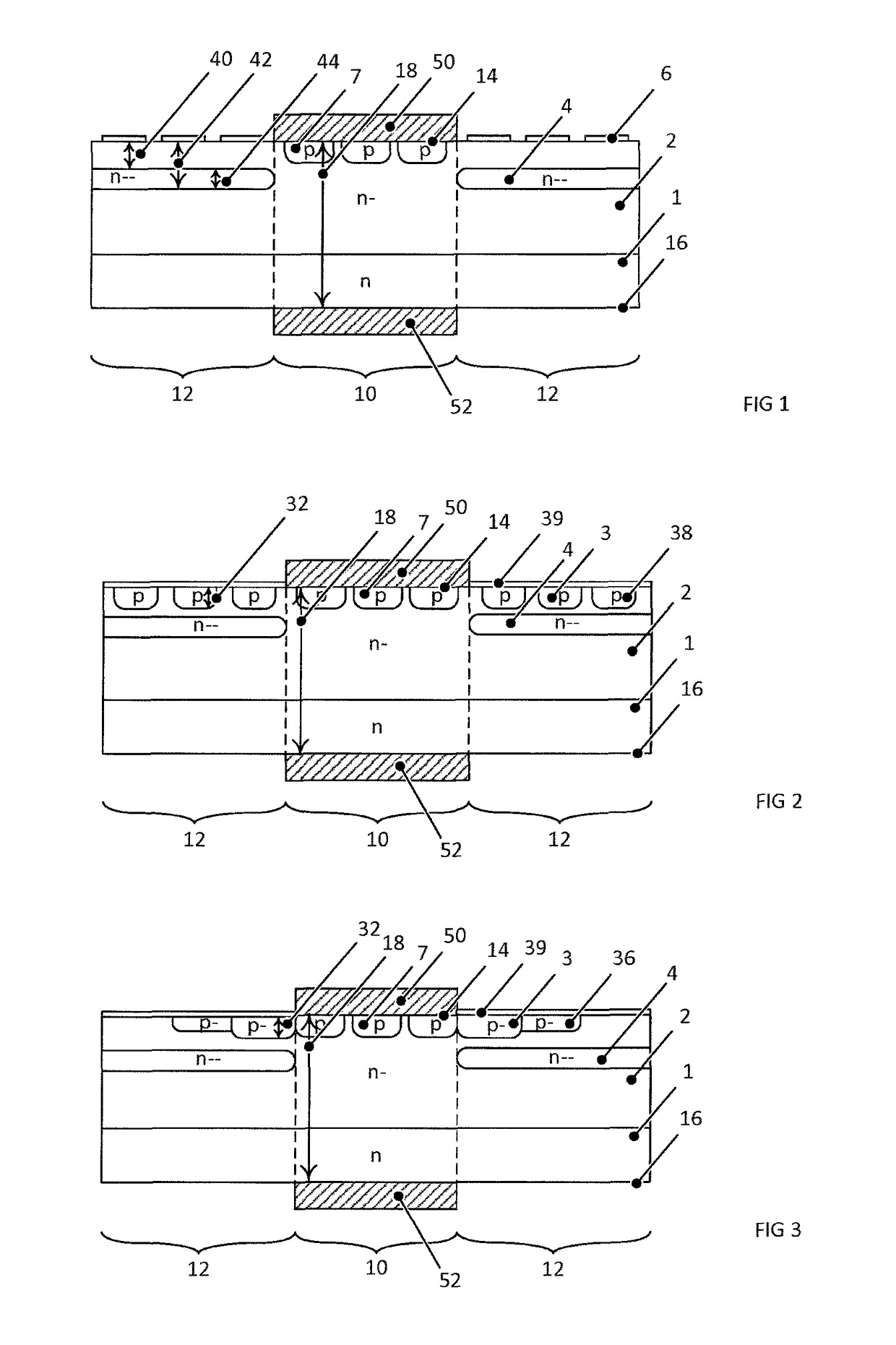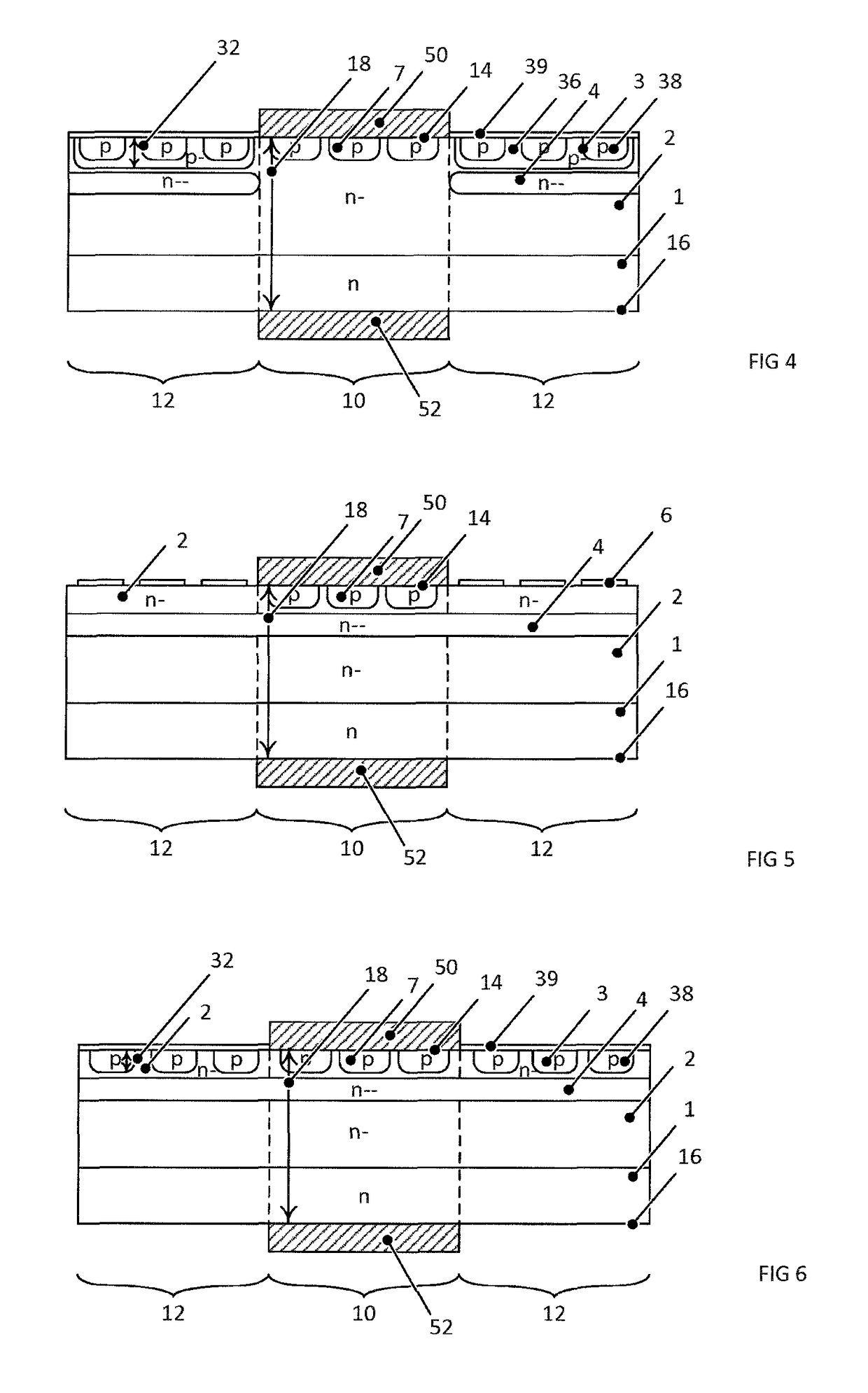Method for manufacturing an edge termination for a silicon carbide power semiconductor device
a technology of silicon carbide power semiconductor and edge termination, which is applied in the direction of semiconductor devices, diodes, electrical apparatus, etc., can solve the problems of increasing alignment precision and reproducibility, reducing production yield, and manufacturing costs, so as to improve the breakdown properties of the device, reduce the cost of manufacturing, and prevent or at least reduce the effect of electric field peak
- Summary
- Abstract
- Description
- Claims
- Application Information
AI Technical Summary
Benefits of technology
Problems solved by technology
Method used
Image
Examples
Embodiment Construction
[0027]FIGS. 1 to 8 and 16 show an inventive silicon carbide power semiconductor device in form of a Junction Barrier Schottky (JBS) diode or a merged PiN Schottky (MPS) diode having a central region 10 and an edge region 12 (termination region) between a first main side 14 and a second main side 16 opposite to the first main side 14. An n doped silicon carbide substrate layer 1 is arranged on the second main side 16. An n− doped silicon carbide drift layer 2 which is lower doped than the n doped SiC substrate 1, is arranged on the first main side 14.
[0028]In the edge region 10 an (n−−) doped doping reduction layer 4 is arranged, which has a lower doping concentration than the drift layer 2, wherein the doping reduction layer 4 is arranged in a layer depth range 44 between a doping concentration minimum 40 below the first main side 14 up to a maximum doping reduction layer depth 42. This maximum depth 42 is lower than the thickness of the power semiconductor device. The doping concen...
PUM
| Property | Measurement | Unit |
|---|---|---|
| depth | aaaaa | aaaaa |
| depth | aaaaa | aaaaa |
| energy | aaaaa | aaaaa |
Abstract
Description
Claims
Application Information
 Login to View More
Login to View More - R&D
- Intellectual Property
- Life Sciences
- Materials
- Tech Scout
- Unparalleled Data Quality
- Higher Quality Content
- 60% Fewer Hallucinations
Browse by: Latest US Patents, China's latest patents, Technical Efficacy Thesaurus, Application Domain, Technology Topic, Popular Technical Reports.
© 2025 PatSnap. All rights reserved.Legal|Privacy policy|Modern Slavery Act Transparency Statement|Sitemap|About US| Contact US: help@patsnap.com



